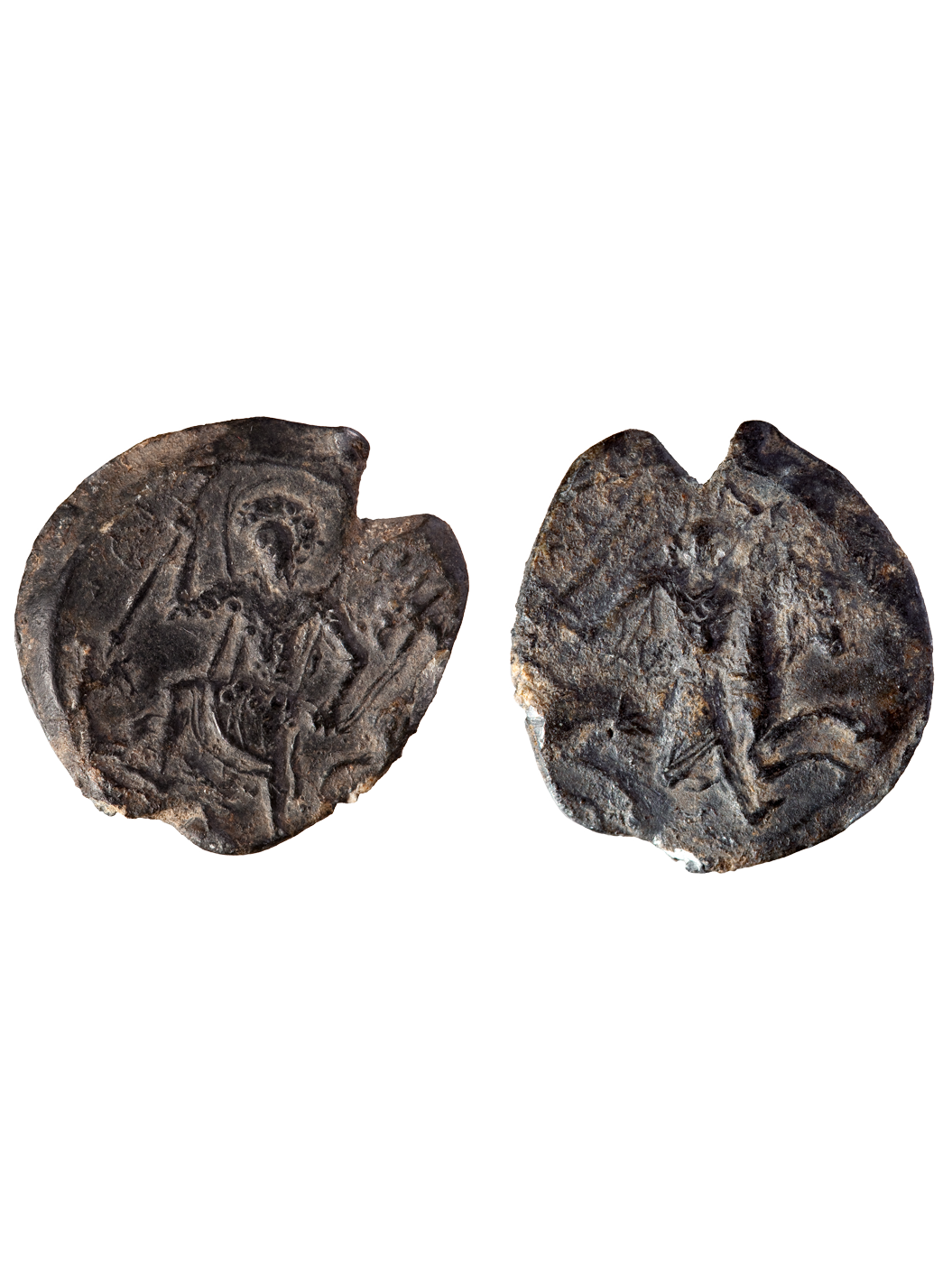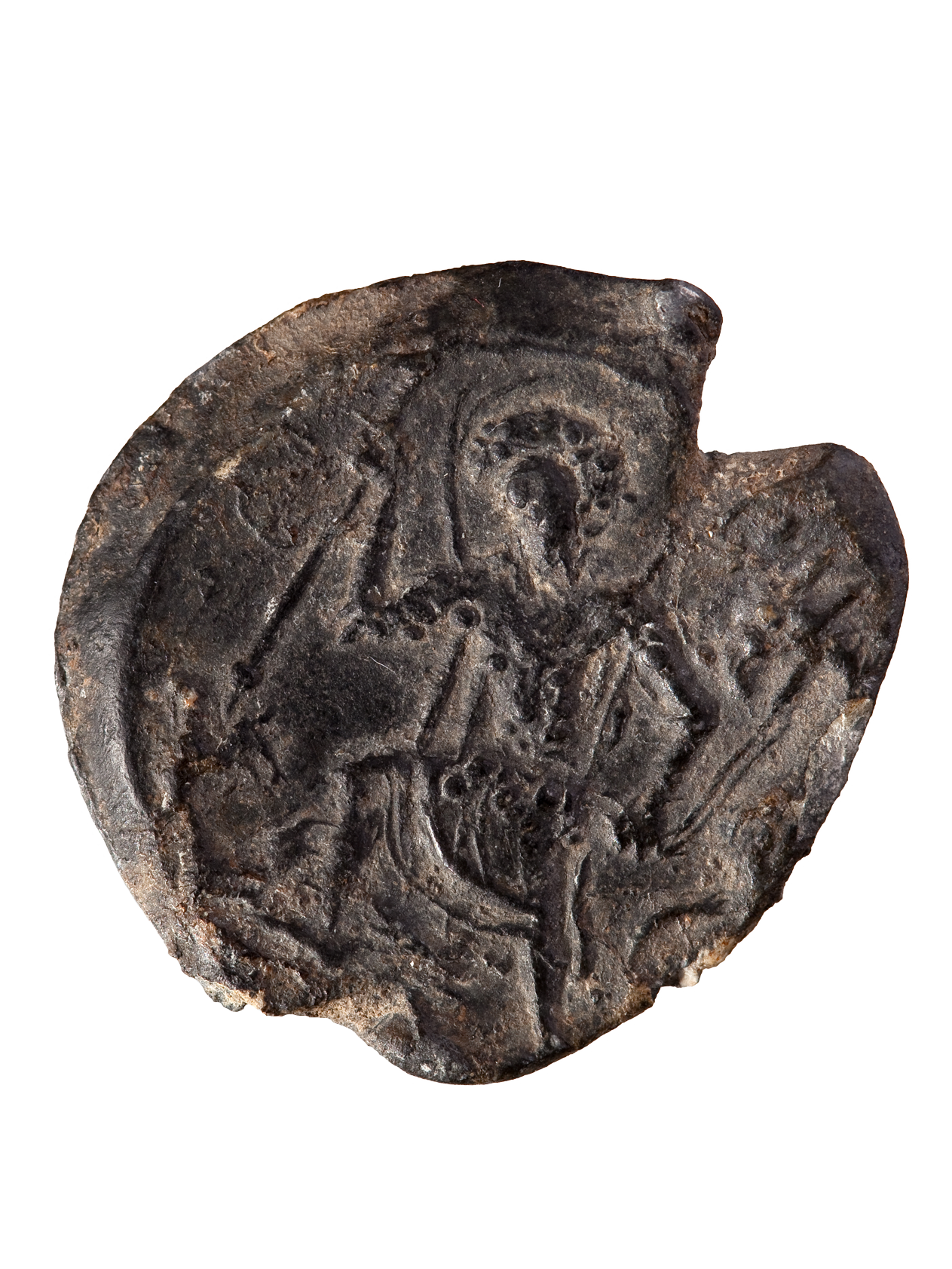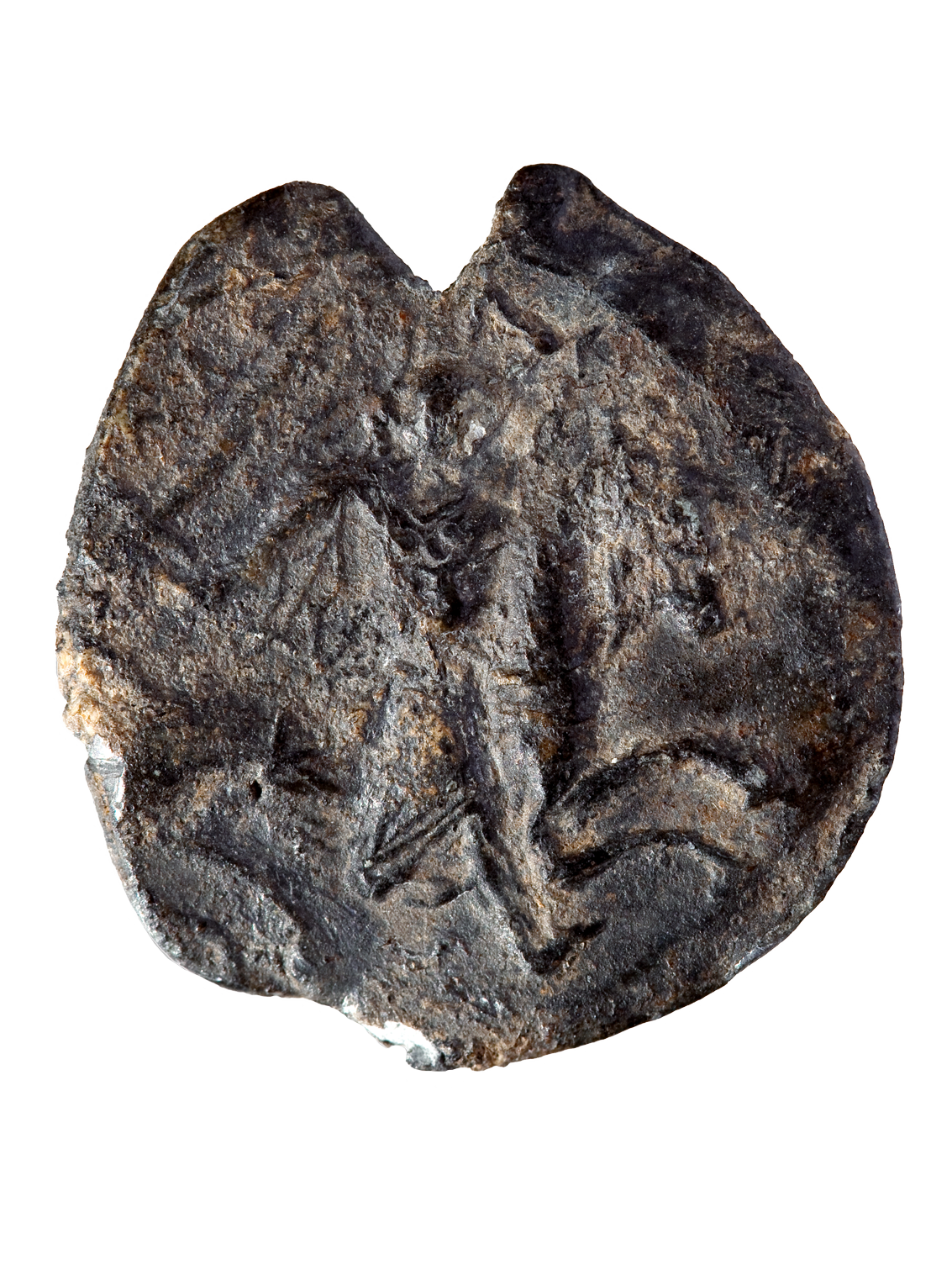Hanging seal of prince Alexander Yaroslavich Nevsky



On an obverse: a hoursman with a raised sword in his right hand.
On a reverse: a figure of the Saint with the halo, leading with his left hand a horse by the bridle, in his right hand is a spear directed down with its spike that defeats the serpent.
Prince Alexander Yaroslavich Nevsky (1221-1263) was grandson of Vsevolod the Big Nest, he was Prince of Novgorod (1236-1251) and Grand Prince of Vladimir (from 1252). He defeated Swedish and German knights in the Neva Battle and the Battle on the Ice.
He is one of the most popular princes of Old Russia, proclaimed a Saint by the Russian Church. (His ashes were transferred from Vladimir to Saint-Petersburg in 1724 and solemnly reburied in the Alexander Nevsky Lavra).
On Russian princely seals, up to the XIV century, princes were depicted in images of saints named as the owner and his father. In Russia each Prince had two names -secular and Christian (baptismal). Thus, on the seal of Alexander Nevsky on the front side there is an image of the heavenly patron of Alexander himself, and on the reverse side – the patron of his father Yaroslav Vsevolodovich, whose baptism name was Fyodor – Saint Theodore Stratelates in the scene of "the miracle of the serpent".
On an obverse: a hoursman with a raised sword in his right hand.
On a reverse: a figure of the Saint with the halo, leading with his left hand a horse by the bridle, in his right hand is a spear directed down with its spike that defeats the serpent.
Prince Alexander Yaroslavich Nevsky (1221-1263) was grandson of Vsevolod the Big Nest, he was Prince of Novgorod (1236-1251) and Grand Prince of Vladimir (from 1252).
He is one of the most popular princes of Old Russia, proclaimed a Saint by the Russian Church. With name of Alexander Yaroslavich, first of all, are connected victories over Swedish knights in the Neva Battle in 1240 and German knights-crusaders in the Battle on the Ice on April 5th,1242. With his cautious and circumspect policy he saved Russia from final devastation by nomads; ruinous for Russia union with papacy (renouncing in 1250 the Union with Rome) and the rapprochement of Rome and the crusaders with the Horde.
Soon after death of Prince an unknown monk of the Vladimir's Convent of Nativity of Theotokos, where Alexander Nevsky was buried, wrote "Life of Alexander Nevsky". He was glorified (canonized) by the Russian Orthodox Church in 1547 during a churchv council. In 1724 by the order of Peter the Great prince's ashes were transferred from Vladimir to Saint-Petersburg and solemnly reburied in the Alexander Nevsky Lavra.
Seals of Alexander Nevsky belong to the big group of seals with images of saint Alexander and Theodore. On Russian princely seals, up to the XIV century, princes were depicted in images of saints named as the owner and his father. In Russia each Prince had two names -secular and Christian (baptismal). Thus, on the seal of Alexander Nevsky on the front side there is an image of the heavenly patron of Alexander himself (a warrior on a horse), and on the reverse side – the patron of his father Yaroslav Vsevolodovich, whose baptism name was Fyodor – Saint Theodore Stratelates in the scene of "the miracle of the serpent". The saint is depicted in full length defeating a serpent with a spear and leading by the bridle a horse that is depicted quite conventionally.


